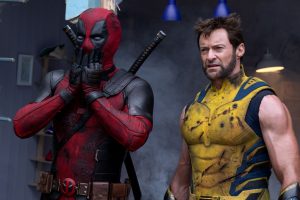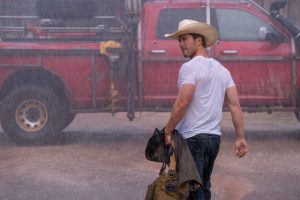Reviews include Deadpool & Wolverine, Doubles, and Mountain Queen: The Summits of Lhakpa Sherpa.
Paterson and Jim Jarmusch’s Integrity Trilogy
February 15, 2017
“I used my imagination.”
These four words, intoned by the mysterious hero of The Limits of Control (2009), constitute a maxim that informs the whole of Jim Jarmusch’s filmography. With his characteristic—if not exclusive—favouring of idiosyncratic behaviour and quotidian episode over bold gesture and high drama, Jarmusch’s films reimagine the boundaries of suitable subject matter for narrative cinema. Meanwhile, with his disinterest in plot mechanics—or, as some might have it, laziness—Jarmusch’s implicit petition to use one’s imagination requires audiences to fill in certain ostentatious ellipses, such as the means by which three men escape from a Louisiana prison in Down By Law (1986) or by which a figure known only as the Lone Man penetrates a heavily guarded fortress in rural Spain in The Limits of Control.
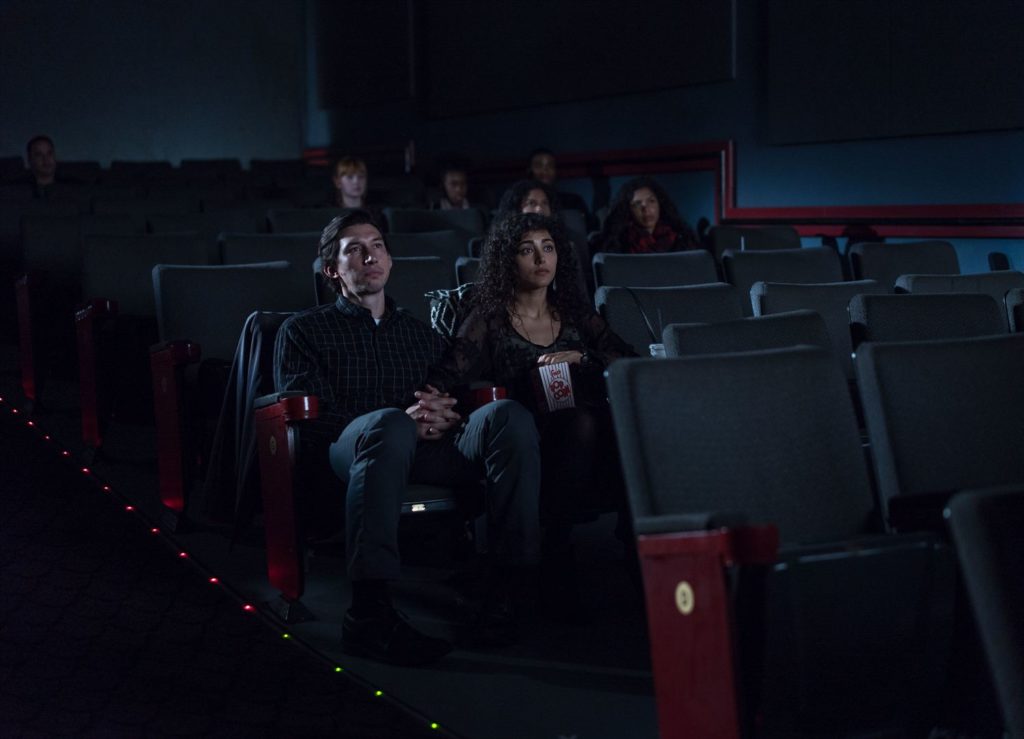
The virtue of imagination is more overtly embodied, however, in three particular Jarmusch protagonists: the titular urban ascetic assassin in Ghost Dog: The Way of Samurai (1999), the Lone Man, and the titular bus driver-poet in the newly released Paterson (2016). While the majority of Jarmusch’s characters might best be described as charismatic rogues, innocents, slackers or jerks—Willie in Stranger Than Paradise (1984), Zack, Jack and Roberto in Down By Law, William Blake in Dead Man (1995), Steve in ‘Cousins?’ (2003), Don Johnston in Broken Flowers (2005)—Ghost Dog, the Lone Man and Paterson are defined by rigorously adhered-to principles: imagination, of course, but also patience, reticence, discipline, a reverence for history and forgotten traditions, the refusal to blindly embrace distraction-laden technologies and a resistance to the seeking of notoriety. (To be sure, some of these principles are also held by Adam in Only Lovers Left Alive [2013], but in his case these principles seem more fraught with anxiety and are conveyed in pointed contrast to those of Eve, Adam’s spouse and the film’s co-protagonist.)
What makes Paterson such a remarkable conclusion to what we might dub Jarmusch’s “integrity trilogy” is that it’s the only film of the three to question the merits of its protagonist’s principles. While there is never any doubt that Ghost Dog and the Lone Man will stoically abide by their codes—even if it means dying by those codes—Paterson’s belief system eventually comes to look excessively rigid, costs him dearly, and may prompt a shift in how he proceeds after the film draws to its close.
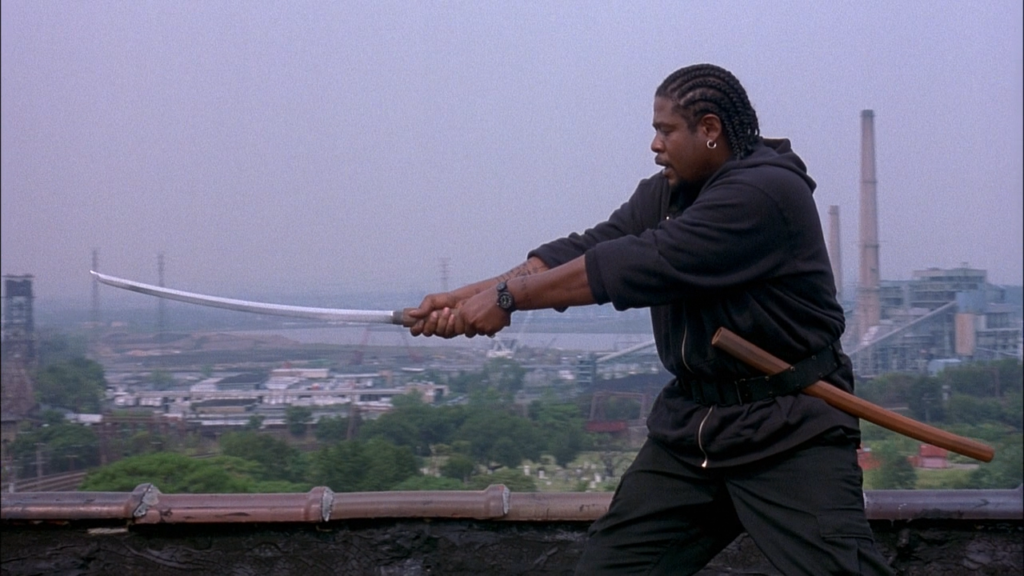
Ghost Dog was not the first of Jarmusch’s films to prominently feature a character who could be regarded as a heroic model—Dead Man’s Nobody, at once wise, hardboiled and generous, could arguably fill that role—but Ghost Dog (Forest Whittaker) is the first to be featured as a protagonist, one whose principals play a decisive role in the film’s plot. Having been rescued from a potentially lethal attack by Louie (John Tormey), a low-level Mafiosi, Ghost Dog devotes himself to becoming Louie’s retainer. Ghost Dog trains himself to be something of a modern-day samurai, fearsomely deft with a variety of weapons, mediating on the wisdom of the Hagakure and subsisting on an absolute minimum of earthly wares, though his corpulence suggests that whatever food he manages to acquire possesses a high fat content—we know that at the very least he indulges in ice cream.
Ghost Dog lives in a shack on the roof of a rundown Jersey City apartment building. He communicates with Louie solely via passenger pigeon. His only friends appear to be an immigrant ice cream vendor (Isaach De Bankolé) with whom he shares no common tongue; the RZA, a member of The Wu-Tang Clan and the composer of Ghost Dog’s score, who Ghost Dog encounters briefly on a city sidewalk; and a precocious young girl (Camille Winbush) he meets in a park and lends a volume of Ryūnosuke Akutagawa’s stories. Acting as Louie’s retainer means that Ghost Dog is charged with liquidating various miscreants who fall out of favour with Louie’s organization. Ghost Dog appears to accept the ethical questions associated with these tasks as beyond his function or capacity to understand: again, he lives to serve his master unconditionally, and this seems to preclude moral quandaries. When the kingpins of Louie’s organization declare their unhappiness with one of Ghost Dog’s jobs, Ghost Dog himself becomes the next subject on their hit list. Since Ghost Dog is devoted to Louie, he is not entitled to save himself should Louie personally endeavour to see through with Ghost Dog’s elimination. So herein lies the film’s central conflict—or, rather, this would constitute a conflict if Ghost Dog were not utterly resolved to his fate. The hero dies in the end, not because Ghost Dog is a tragedy, but, rather, because the hero is a paragon of stalwart vocation, and because his study of the Hagakure has prepared him for this noble death. All is as it should be.
The motives of the Lone Man (De Bankolé) are more mysterious than those of Ghost Dog, which is fitting given that The Limits of Control is a far more oneiric film than Ghost Dog, one whose logic is labile to passing gusts of pure imagination. Once again, the protagonist of this story is a killer, though the details of his professional life are obscure. He takes a meeting in an airport lounge with two besuited men who would appear to be his contractors, but their exchanges are draped in riddles, subject to lackadaisical translation, and impart no special sense of fidelity. Indeed, rather than consider himself anyone’s retainer, the Lone(r) Man will later state unequivocally, “I am among no one.” If the Lone Man is, like Ghost Dog, untroubled by murder, it may be because he believes those he kills to be genuinely worthy of such punishment. Given that The Limits of Control is something of an homage to Point Blank (1967), one could suppose that avarice or revenge might play a role in the Lone Man’s activities, but the Lone Man only exhibits disinterest in material goods and at one point declares revenge as useless. Perhaps the Lone Man simply ascribes to the motto repeated throughout The Limits of Control: “La vida no vale nada,” or “Life is worthless,” and thus considers all collateral damage accrued in his trade mere grist for the mill.
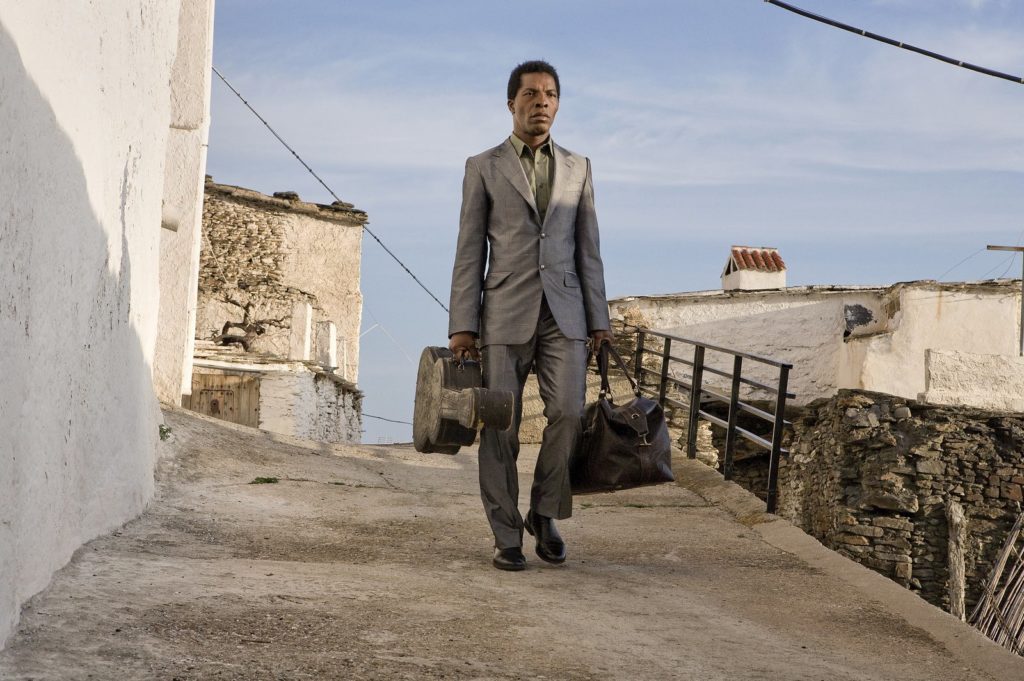
Unlike Ghost Dog, the Lone Man abstains from using conventional weapons; when he finally disposes of his target, a figure identified only as the American (Bill Murray), he does so by using a guitar string as a strangulation device—a feat of imagination. Like Ghost Dog, the Lone Man abstains from modern telecommunications. As one of the Lone Man’s many shadowy visitors observes, he believes in “no guns, no mobiles, no sex”—though, lest we take the Lone Man for celibate, that last dictum apparently only applies to working hours. What we mostly observe the Lone Man doing is traveling; holding vigil; visiting Madrid’s Museo Reina Sofía, where he examines paintings that foreshadow future events; and taking meetings with several liaisons with whom he swaps matchboxes and has one-sided conversations about subjects such as the memories of musical instruments. Dreamlike at every turn, The Limits of Control is littered with cryptic gestures and visions that may or may not hold significance: the repeated appearance of a helicopter in the sky, a pair of men carrying a bathtub, the Lone Man’s ornery insistence on always being served two espressos in separate cups simultaneously—is the espresso thing a way of signaling his presence or a way of maintaining some sort of inner balance? He does tai chi, so the latter theory isn’t entirely out to lunch. In any case, the Lone Man is another protagonist who strictly adheres to a code, and there is nary a moment in The Limits of Control that gives any indication that this code is to be questioned.
However eccentric or enigmatic they may be, Ghost Dog—which fuses tropes and credos from gangster films, chanbara, westerns and hip-hop—and The Limits of Control are films that feature tactics and narrative trajectories drawn from established genres and myth. The incidents and tenor of Paterson are more identifiable and, one assumes, closer to its director’s heart and range of experience. Jarmusch seems far too pacifistic and affectionate a filmmaker to advocate killing outside of the confines of cinematic fantasy; writing poems and working in public transportation, however, strike me as callings Jarmusch can genuinely get behind. Yet as different from Ghost Dog and the Lone Man as Paterson may be, these three have much in common. Like his predecessors in this integrity trilogy, Paterson eschews modern technology; like his predecessors, he is a creature of discipline, regularity and devotion. (And interestingly, Paterson is, like his predecessors, at least capable of violence: we know from a photo seen in his bedroom that he is a veteran of the US military, and at one point we see Paterson swiftly disarm a man wielding a pistol.)
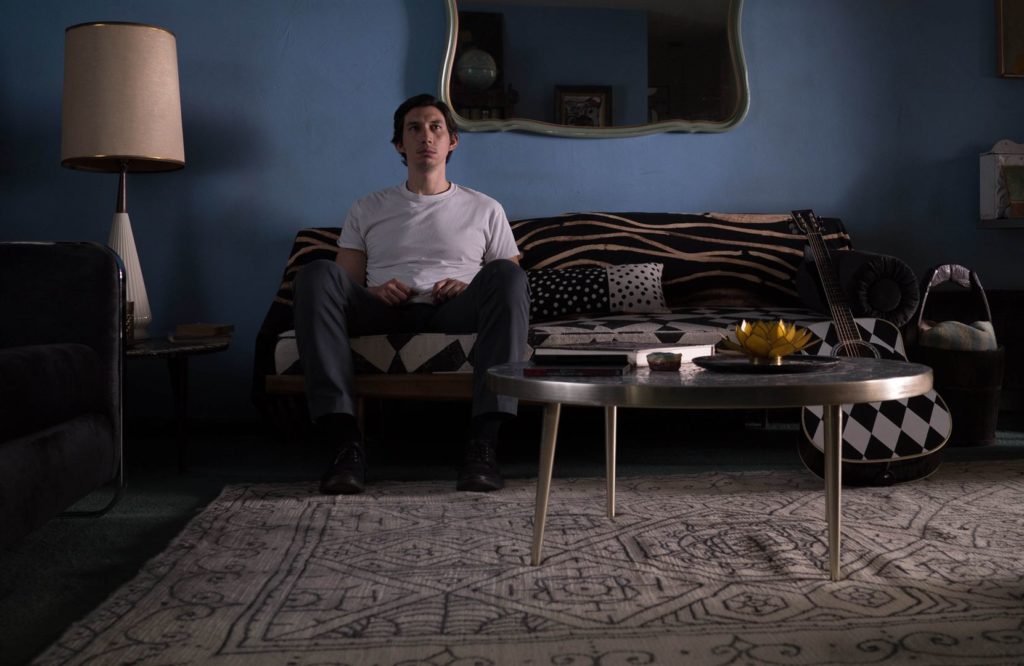
Paterson (the fatefully surnamed Adam Driver, whose mammoth cheekbones rival those of De Bankolé) rises early five days a week to ply his trade in the streets of Paterson, New Jersey; every workday eats his lunch near the Great Falls of the Passaic River; every evening he walks his dog, Marvin (no doubt named after Lee, of Point Blank), to the same unpretentious local tavern where he sits on the same barstool, imbibes the same unpretentious beer, and has a more or less uniformly pleasant conversation with either the bartender or fellow regulars while never volunteering a great deal of personal information. Like Ghost Dog and the Lone Man, Paterson, though more approachable and tender, is notably laconic, a characteristic that aligns perfectly with both his vocations: as a bus driver he’s inclined to minimize verbal exchanges so as not to become distracted while driving; as a poet he’s inclined to value compaction in language. His poems—which are in fact the work of American poet Ron Padgett—are neither maximalist nor minimalist; rather, they are exactly as conversational as Paterson is: they use the language of the everyday, but every word counts.
It is in his practice as a poet, however, that aspects of Paterson’s personal integrity eventually prove to be a liability. Though Paterson is disciplined, talented and appears to take his poetry seriously, he makes no efforts to have his work published. He shows his poems to no one save his wife, Laura (Golshifteh Farahani). What’s more, perhaps in part as a reaction to his distaste for digital technologies—and maybe even typewriters—Paterson only writes his poems by hand in a single notebook. Laura makes him promise to at least photocopy the contents of this notebook, but Paterson seems to deliberately avoid fulfilling this promise. In her approach to creative expression, Laura could not be more different from Paterson: she operates on whims and casts her nets wide, one day committing herself to repainting nearly every object in their modest bungalow with the same distinctive motif, another day determining to become the city’s reigning queen of artisanal cupcakes, on yet another deciding to transform herself into a country & western singer and guitarist. While gentle Paterson gives an overwhelming impression of humbleness, one gets the impression that he regards the austere conditions of his writing practice as noble and pure. Where Laura could be regarded as an unabashed dilettante, Paterson’s high-minded approach to his poetry is like that of a monk dedicating his life to a single task. But Laura’s ostensible dilettantism doesn’t preclude either artistic or commercial success—she at the very least exudes charisma, doggedness and a strong signature sensibility—while Paterson’s particular notions of rigour and integrity not only shield him from the criticism of the world beyond his home, but also wind up causing him to lose his body of work: one night while the couple is out, Marvin completely shreds Paterson’s notebook, eliminating the entire corpus in one horrifying act of canine caprice. If only Paterson had followed Laura’s advice.

While telling a story that feels more grounded in the ordinary, Jarmusch also imbues his latest feature with a new maturity. Nothing if not a filmmaker given to showcasing enthusiasms, Jarmusch surely holds each of the protagonists in this integrity trilogy in high esteem—yet how refreshing to see the myriad ways in which Paterson is able to both honour and subtly critique its protagonist’s convictions. Paterson ends the film devastated over the loss of his poetry. Though it’s his day off, he makes an extracurricular excursion to those same Falls where he lunches and hones his poems. There he meets a Japanese tourist (played by Masatoshi Nagase, who previously toured the US in Jarmsuch’s 1989 film Mystery Train) in precisely the sort of chance encounter Jarmusch loves to stage variations on. Paterson and the tourist discover a shared love of poetry—and it must be said that Jarmusch’s belief in the ubiquity of poetry love is touchingly optimistic—and before they part ways the tourist gives Paterson a lovely blank notebook. This exquisite final scene is one of somber renewal, encouraging the hero to reapply himself to his calling. But one can easily imagine that this renewal comes with a call to reexamine certain principals for Paterson—and maybe for Jarmusch’s too. Wisdom, after all, is not a fixed thing, and changeability is the nature of any art worth its name.
—José Teodoro

